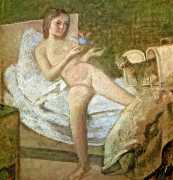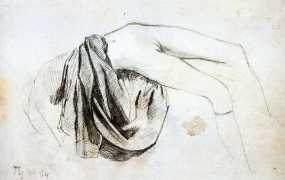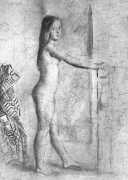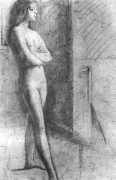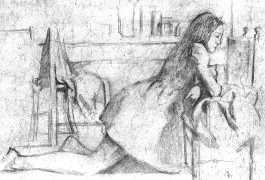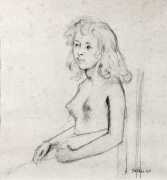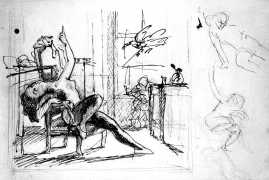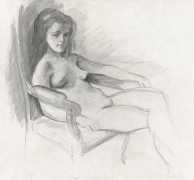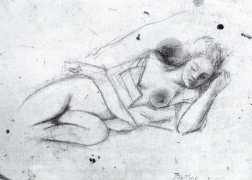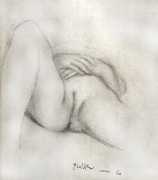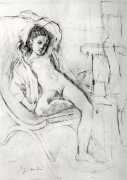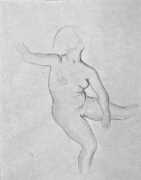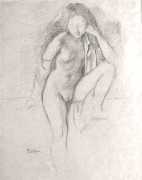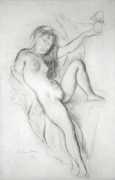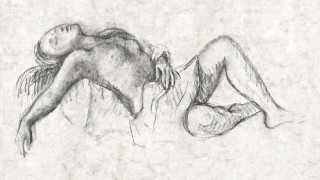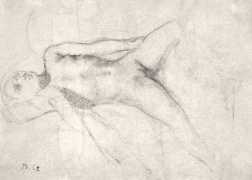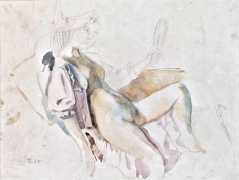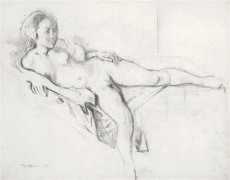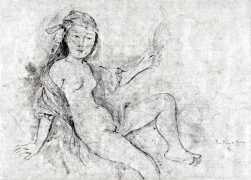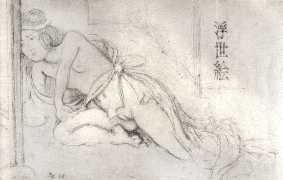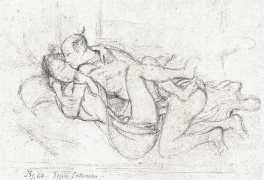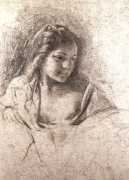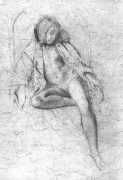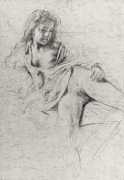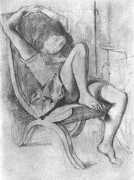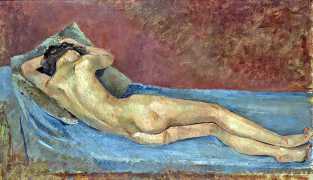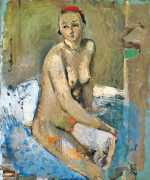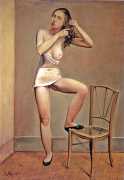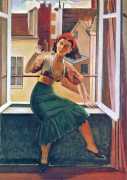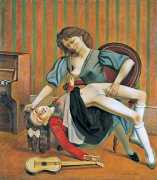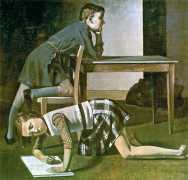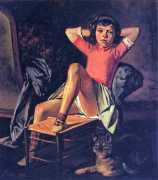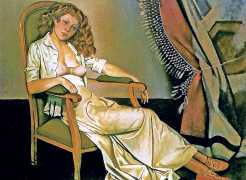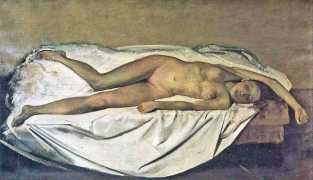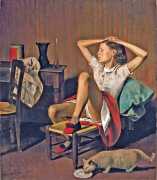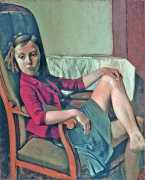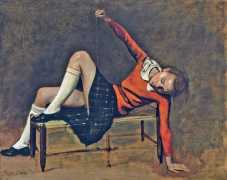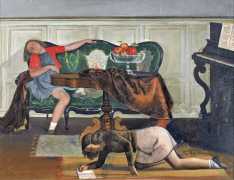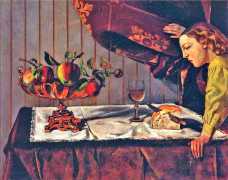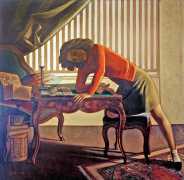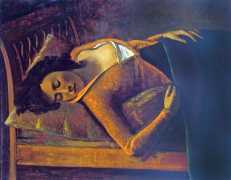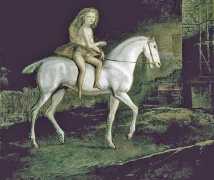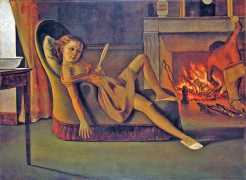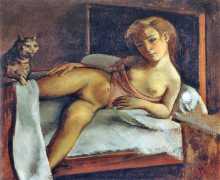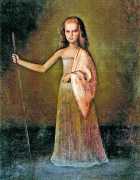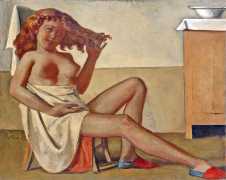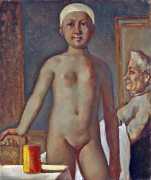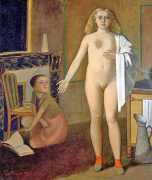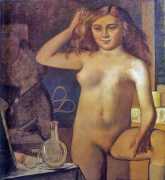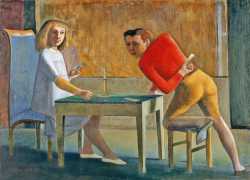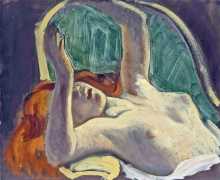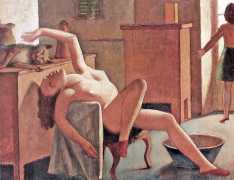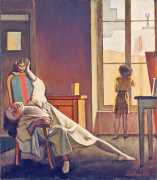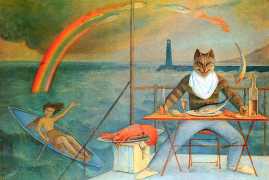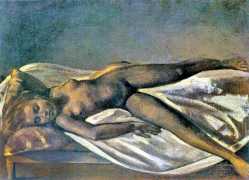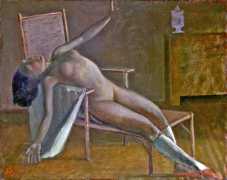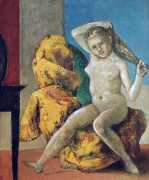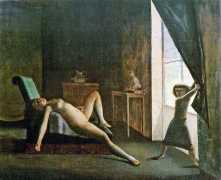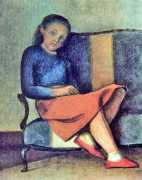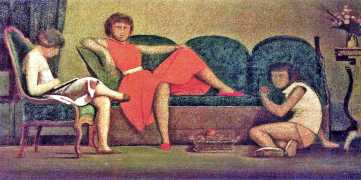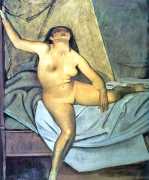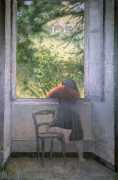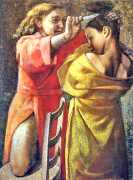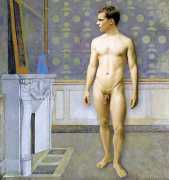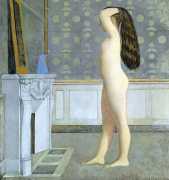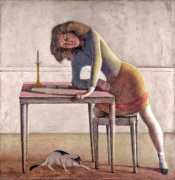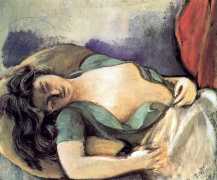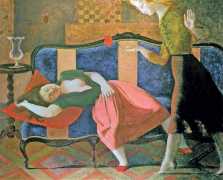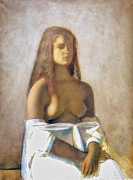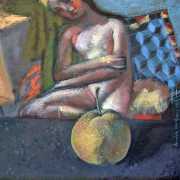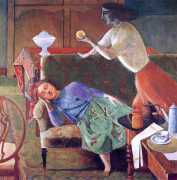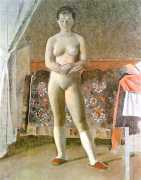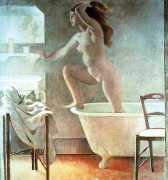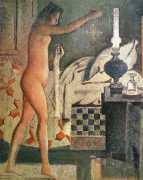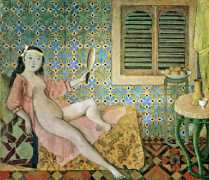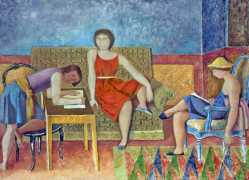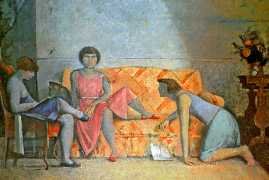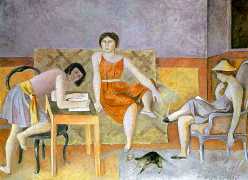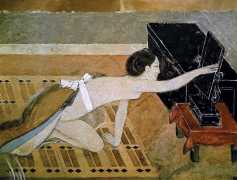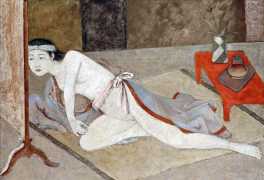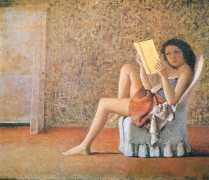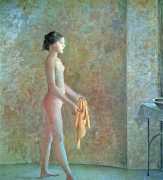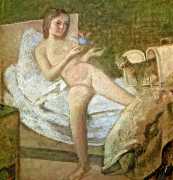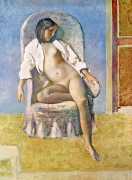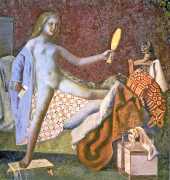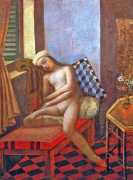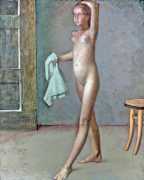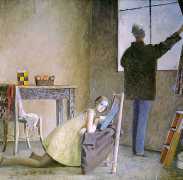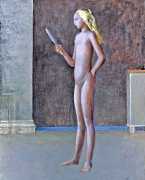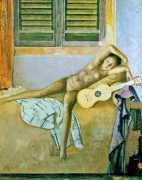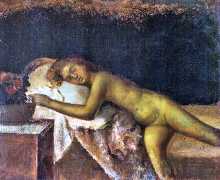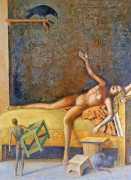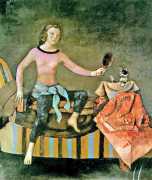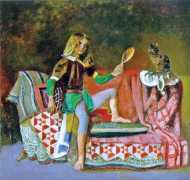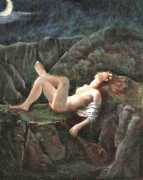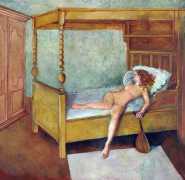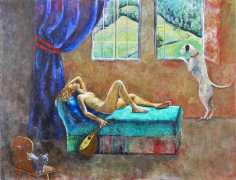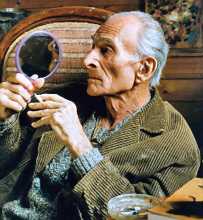 The Polish-French artist Balthazar Klossowski de Rola, commonly known as Balthus, is best known for his paintings of young girls, although he did also paint some landscapes. While his works have made him one of the cult figures of modern art, they have also brought him considerable notoriety.
The Polish-French artist Balthazar Klossowski de Rola, commonly known as Balthus, is best known for his paintings of young girls, although he did also paint some landscapes. While his works have made him one of the cult figures of modern art, they have also brought him considerable notoriety.
Balthus and his older brother Pierre were born in Paris to Prussian expatriate parents. Their father, Erich Klossowski, was an art historian who wrote a noted monograph on Honoré Daumier. Erich had grown up in the town of Ragnit in East Prussia, now part of Russia but then in the German Empire, and according to Balthus he belonged to the former Polish petty nobility. Their mother Elisabeth Dorothée Spiro Klossowska, usually known as Balladine, was descended from Lithuanian Jews who had emigrated to East Prussia.
The Klossowski children grew up in an artistic environment, with frequent visits to their household by famous artists and writers, including Rainer Maria Rilke, André Gide, and Jean Cocteau, who depicted the family in scenes in his 1929 novel Les enfants terribles. The artists Maurice Denis and Pierre Bonnard were also visitors. The children had a Scottish nanny, and Balthus would later say that his first language was English, although his parents spoke German to one another.
Shortly after the First World War began in 1914 the family were forced to leave Paris in order to avoid deportation due to their German citizenship. They settled first in Switzerland, and later in Berlin. In 1917 the parents separated, and their mother moved with the two boys to Geneva. A year later Balladine became the lover of Rilke, who was impressed with the young Balthus’s artistic talent and helped him to publish his first work in 1921, at the age of thirteen, a book titled Mitsou which included forty drawings by Balthus and a preface by Rilke. The comic book style pictures depict the story of a young boy who loses his beloved cat, foreshadowing foreshadowed Balthus’s lifelong fascination with cats.
From 1930 to 1931 Balthus served in the French army in Morocco, and in 1933 moved to Paris, taking a studio in the Rue de Furstemberg. He showed no interest in modernist styles such as cubism, his paintings being more realistic and figurative. Early on his work was admired by writers and fellow painters, especially André Breton and Pablo Picasso. His circle of friends in Paris included the novelists Pierre Jean Jouve, Antoine de Saint-Exupéry, Joseph Breitbach, Pierre Leyris, Henri Michaux, Michel Leiris and René Char, the photographer Man Ray, the playwright and actor Antonin Artaud, and the painters André Derain, Joan Miró and Alberto Giacometti.
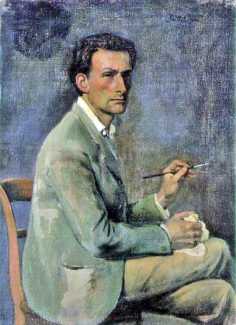
In 1937 he married Antoinette de Watteville, from an influential Swiss aristocratic family, and they had two sons. In 1940, with the invasion of France by German forces, Balthus and Antoinette fled to a farm in Champrovent near Aix-les-Bains, then in 1942 from occupied France to Switzerland, first to Bern and in 1945 to Geneva, where he became a friend of André Malraux. They returned to France in 1946, and a year later Balthus travelled with André Masson to southern France, meeting figures such as Pablo Picasso and Jacques Lacan, who became a collector of his work.
As his international fame grew, especially with a 1956 exhibition at the Museum of Modern Art in New York, he increasingly cultivated an image of himself as an enigma. In 1964 he moved to Rome where he presided over the Villa de Medici as director of the French Academy in Rome, where he became friends with the filmmaker Federico Fellini and the painter Renato Guttuso. In 1977 he moved to Rossinière in Switzerland, to live with a second wife, Japanese Setsuko Ideta, thirty-five years his junior, who he had met in Japan during a diplomatic mission.
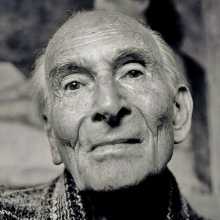
By the time of his death in Rossinière, Balthus had become a celebrity. Prime ministers and rock stars alike attended his funeral. Bono, the lead singer of U2, sang for the hundreds of mourners at the funeral, including the President of France, the Prince Sadruddhin Aga Khan, supermodel Elle Macpherson, and his close friend the artist and photographer Henri Cartier-Bresson.

